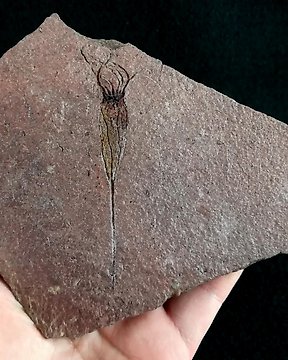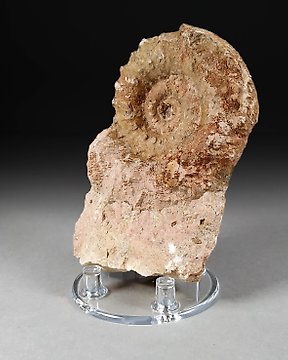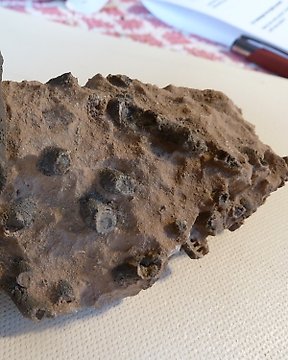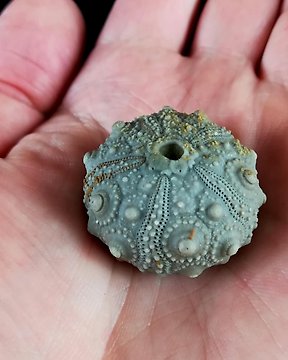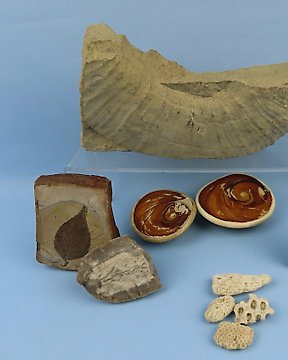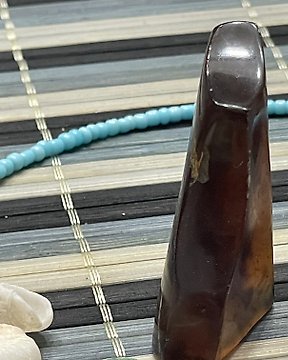grazie a Lei e buona giornata
Hyäne hemimandible, Ictitherium sp., aus dem späten Miozän - Fossiles Fragment - 5 cm - 13.6 cm
Nr. 84834545

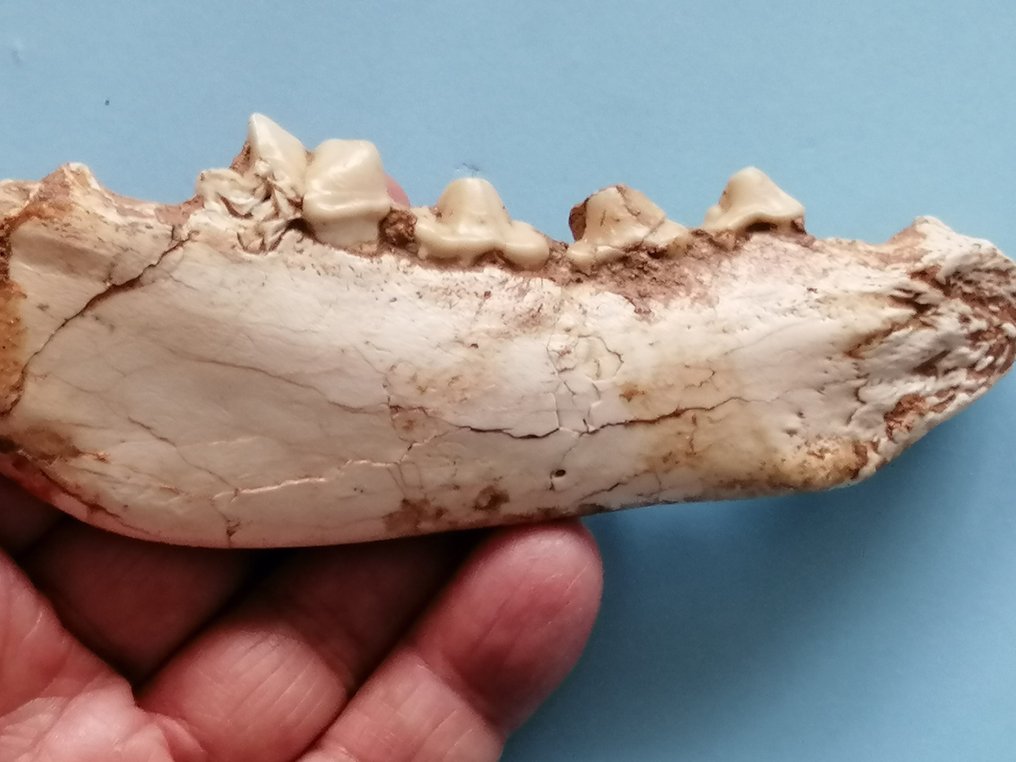
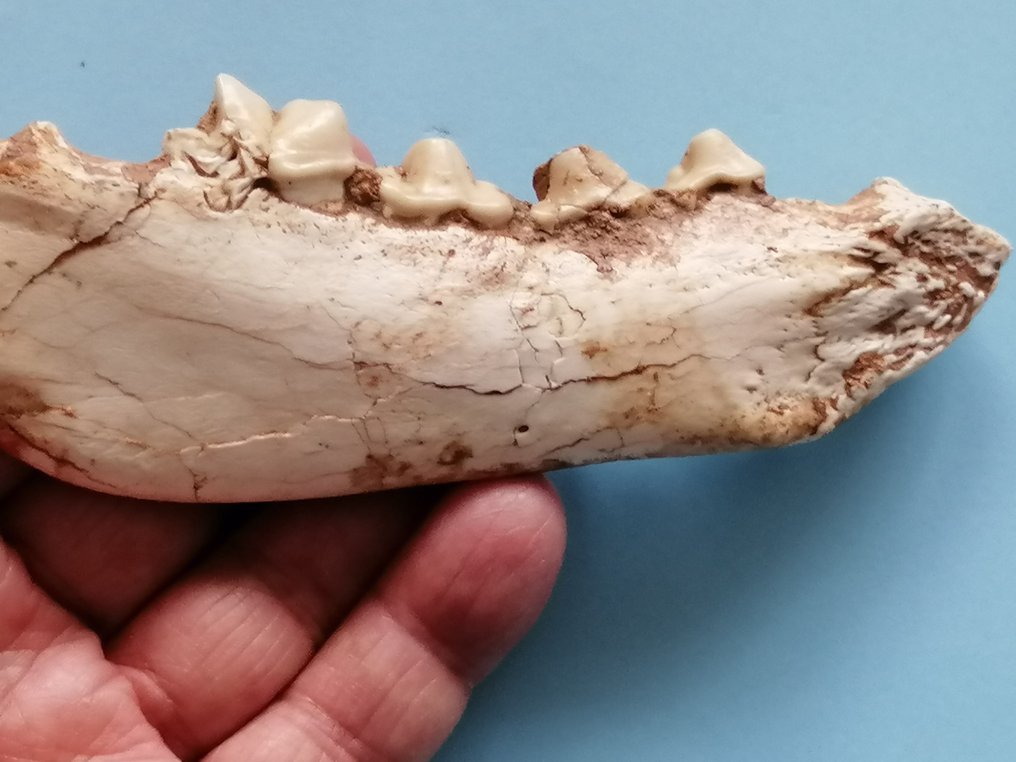

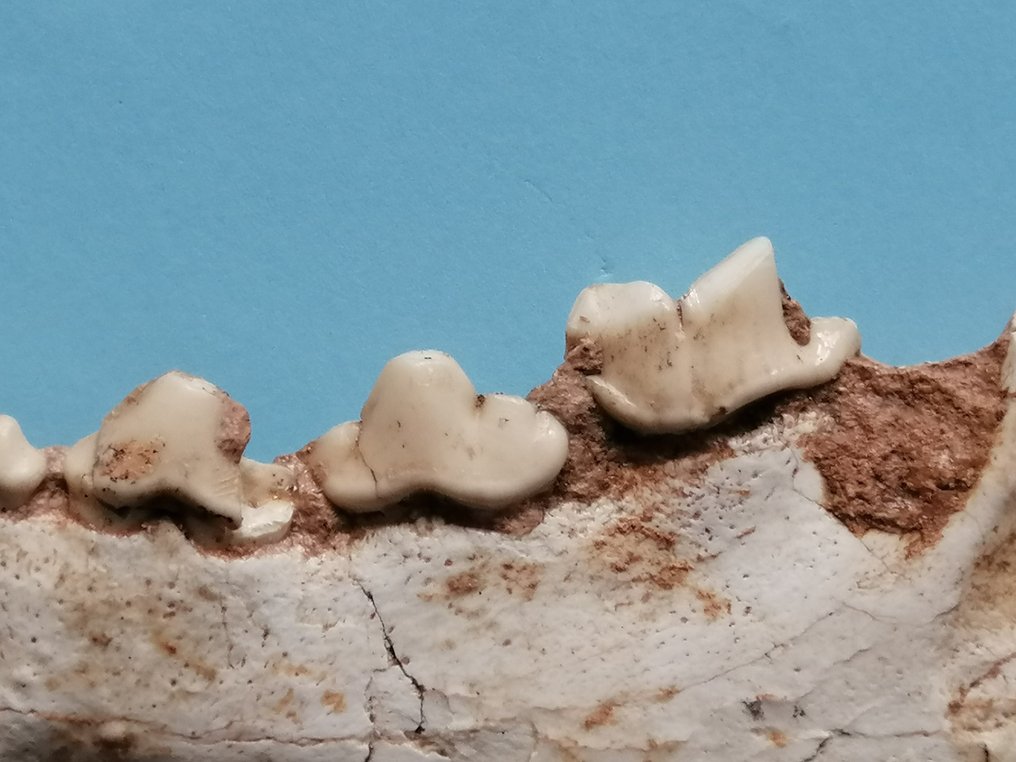
Sei
L'Ictitherium è una iena estinta endemica dell'Eurasia e dell'Africa durante il Miocene medio fino al Pliocene inferiore ed esisteva circa 7,4 milioni di anni. L'animale somigliava più agli zibetti che alle iene moderne, possedendo un corpo lungo con zampe corte e una coda forse corta. Si ipotizza che l'Ictitherium si nutrisse di piante, nonché di mammiferi e uccelli medio-piccoli. Ictitherium era un genere abbondante e di grande successo, con più fossili spesso trovati in un unico sito. Forse questo primitivo genere di iena viveva in branco e aveva un ordine sociale, proprio come i suoi discendenti moderni.
La mandibola misura circa 13,6x1,6x5 cm o 5,35x0,629x1,968 pollici, provenienza Gansu, Cina
Ictitherium is an extinct Hyena which endemic to Eurasia and Africa during the Middle Miocene through the Early Pliocene and existed approximately 7.4 million years. The animal looked more like civets than modern hyenas, possessing a long body with short legs and a possibly short tail. It is speculated that Ictitherium ate plants as well as medium-small mammals and birds. Ictitherium was a very successful and abundant genus, with multiple fossils often being found at a single site. Possibly, this early hyena genus lived in packs and had a social order, much like its modern descendants.
The lower jaw is measured around 13.6x1.6x5 cm or 5.35x0.629x1.968 inches. Gansu, Cina.
Sei
L'Ictitherium è una iena estinta endemica dell'Eurasia e dell'Africa durante il Miocene medio fino al Pliocene inferiore ed esisteva circa 7,4 milioni di anni. L'animale somigliava più agli zibetti che alle iene moderne, possedendo un corpo lungo con zampe corte e una coda forse corta. Si ipotizza che l'Ictitherium si nutrisse di piante, nonché di mammiferi e uccelli medio-piccoli. Ictitherium era un genere abbondante e di grande successo, con più fossili spesso trovati in un unico sito. Forse questo primitivo genere di iena viveva in branco e aveva un ordine sociale, proprio come i suoi discendenti moderni.
La mandibola misura circa 13,6x1,6x5 cm o 5,35x0,629x1,968 pollici, provenienza Gansu, Cina
Ictitherium is an extinct Hyena which endemic to Eurasia and Africa during the Middle Miocene through the Early Pliocene and existed approximately 7.4 million years. The animal looked more like civets than modern hyenas, possessing a long body with short legs and a possibly short tail. It is speculated that Ictitherium ate plants as well as medium-small mammals and birds. Ictitherium was a very successful and abundant genus, with multiple fossils often being found at a single site. Possibly, this early hyena genus lived in packs and had a social order, much like its modern descendants.
The lower jaw is measured around 13.6x1.6x5 cm or 5.35x0.629x1.968 inches. Gansu, Cina.
- 40
- 0
- 0
Nice piece, quick shipping!
Übersetzung ansehenl'm Happy for you...have a nice night
perfetto come sempre
Übersetzung ansehenBonjour, l'envoi était parvenu cassé, après échange avec le vendeur, il m'a renvoyé les fossiles en bon état à l'identique très très rapidement. Merci à lui, excellent
Übersetzung ansehenIl Suiseki, in pietra palombino, è molto bello; è una scultura naturale. La protezione e l'impacchettamento: eccellenti. Grazie.
Übersetzung ansehenla ringrazio e le auguro una buona giornata. Se ne desidera un altro più grande, non esiti a contattarmi. cordiali saluti.
10 OK
Übersetzung ansehentks a lot
Fast delivery
Übersetzung ansehenvery professionale seller. thank you
Übersetzung ansehentks a lot
Fast shipment, item as described. 10/10
Übersetzung ansehenZeer mooi fossiel. Werd stevig verpakt en zeer snel verzonden!
Übersetzung ansehentutto come descritto
Übersetzung ansehenperfetto, come sempre
Übersetzung ansehencome descritto e pubblicato...
Übersetzung ansehenmagnífica rebanada,tal como se muestra en fotografia ...entrega súper rápido ...lo recomiendo 100x100 ....muchísimas gracias
Übersetzung ansehenDe nada...
recibido el pedido, es conforme
Übersetzung ansehengracias y te deseo un buen dia
Excellent item thanks
Übersetzung ansehenÈ un pezzo veramente unico, sono contento che sia andato in buone mani!
Fast and save delivery, tuto bene
Übersetzung ansehentks a lot... have a nice day
come da foto postate
Übersetzung ansehenTodo perfecto!!!!. Un vendedor muy recomendable.!!!!
Übersetzung ansehenSiempre muy amable, muchas gracias Víctor.
Lot as described and in photos. Well professionally packed and fast delivered. Good work, thank you 😊👍
Übersetzung anseheni'm happy für you. Have a nice day
Todo perfecto. Muchas gracias
Übersetzung ansehenpezzo splendido... ancora grazie!
Übersetzung ansehenottimo il pezzo e anche il prezzo... ancora grazie!
Übersetzung ansehenBella pietra ben imballata consegnata rapidamente Grazie
Übersetzung ansehengrazie a Lei...le auguro una buona serata
pezzo di pregio... grazie e buona serata
Übersetzung ansehen- 40
- 0
- 0
grazie a Lei e buona giornata
